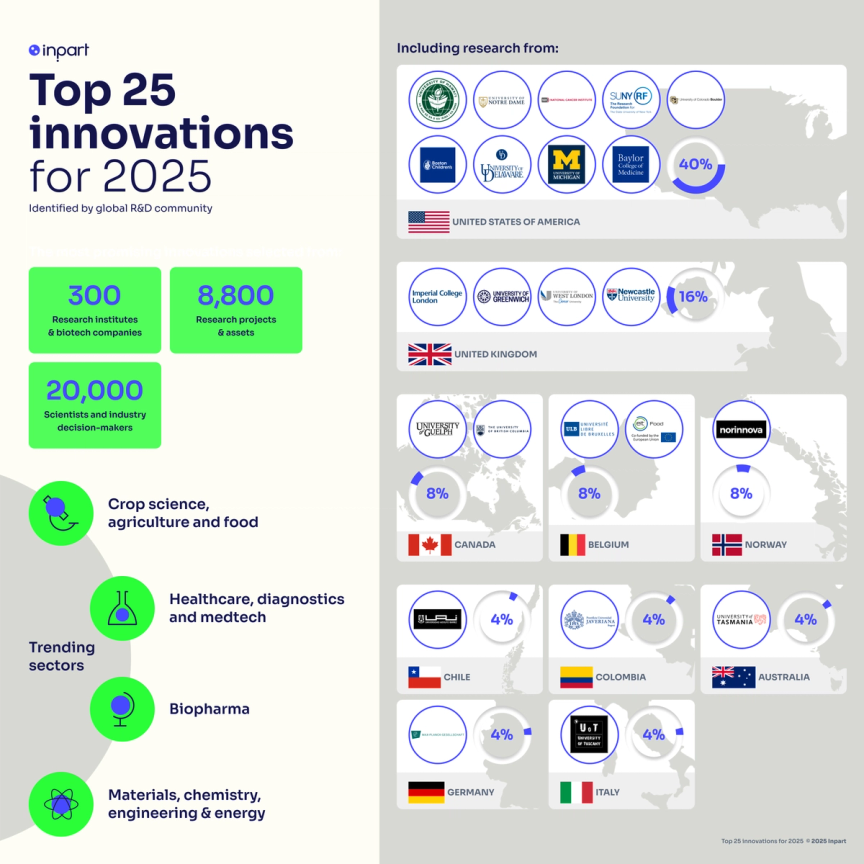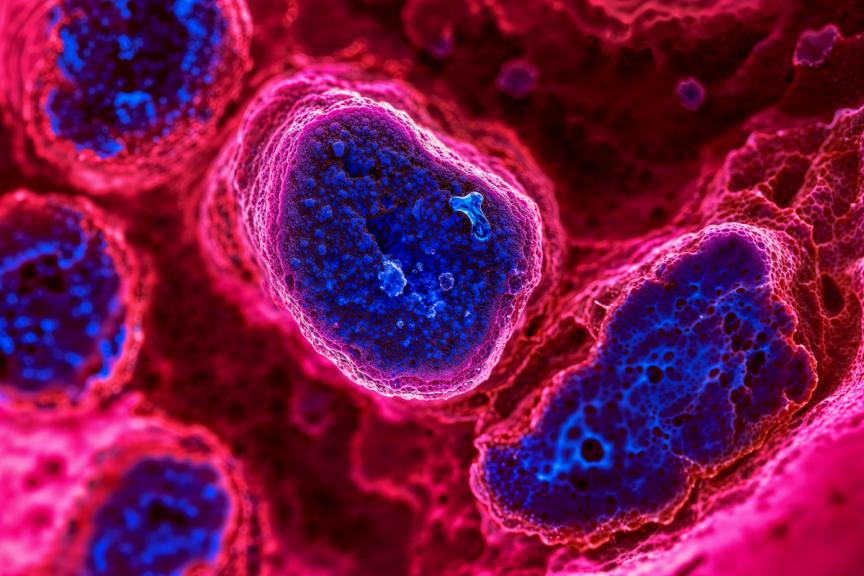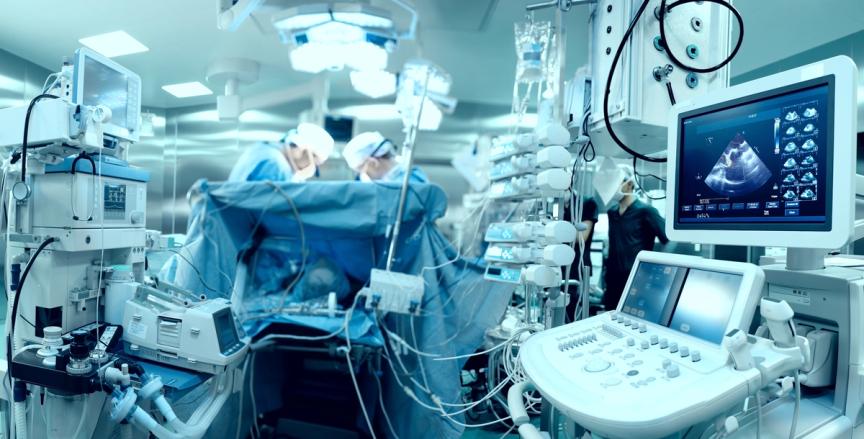Humanity has impacted the earth to such an extent that a new geological era has evolved. Commonly called the Anthropocene, it defines the period in which humans have become the dominant force shaping Earth’s biogeophysical composition and processes. Unfortunately, our impact has led to many of the existential consequences we now face: rapid global warming, acidification of the oceans, and the destruction of our habitats, to name a few.
Fortuitously, we also have the potential to create solutions to these problems through innovation and scientific development. Our partnering platform, Connect, hosts over 8,500 active research projects and technologies which are in development by teams at universities, research institutes and startups around the world, seeking partners to advance and deploy them.
In this article, we identify the 25 top innovations for 2025 from Connect most likely to make waves across sectors including healthcare, biopharma, engineering, agriculture, and food science. These are the innovations that received the most interest from R&D-driven companies using our platform to find new partners over the past year.
Although this list is for everyone, if you work in industry and want to learn more about these projects or the 8,500+ other live opportunities on Connect, please start by creating an account on our partnering network so that you can read the technical project summaries and engage directly with the teams behind them.
What are the top scientific innovations for 2025?
The top scientific innovations for 2025 come from academic teams around the world working on crop science, agriculture and food sustainability, biopharmaceutical research, healthcare and medical technologies, and innovations in chemistry, engineering, materials and energy. These topics were identified by the global R&D community to have significant potential for the future.

Top biopharma innovations
A gene therapy for the treatment of drug-resistant focal epilepsy
Epilepsy affects 1% of people globally and within this population, 30% are resistant to pharmacological treatment. To control seizures, surgical removal of the focal brain area remains the primary option, although this is only feasible in only around 5-10% of cases. Gene therapy is a promising alternative.
At University College London, researchers have developed an adeno-associated virus vector that delivers the LGI1 gene to the brain, creating the LGI1 protein that regulates brain cell excitability. Their approach has demonstrated positive results in rats, and with further development, their method could help drug-resistant epilepsy patients avoid surgery and improve quality of life. The team are seeking licensing opportunities to advance their treatment.
A small molecule inhibitor treating life-threatening cytokine storms
Cytokine storms can occur in a variety of medical conditions where the immune system becomes excessively activated, including influenza, COVID-19, and sepsis. These biological storms can cause death by overwhelming the body with an excessive and uncontrolled inflammatory response, disrupting normal physiological functions.
With this in mind, scientists at the University of Greenwich have developed a small-molecule inhibitor targeting cytokine storms caused by influenza and other conditions. Unlike other immune suppressants, their molecule selectively inhibits pro-inflammatory cytokines, restoring immune balance without compromising infection defense. Preclinical models showed 100% survival of test subjects against the influenza virus when the molecule was combined with the antiviral oseltamivir. The team are seeking co-development, licensing, and investment to bring their technology to market.
A new CAR therapy for solid tumor cancers
Neuroblastoma is one of the most common cancers in children, accounting for 15% of pediatric cancer deaths. Given the poor outcome scenarios, in which children with high-risk neuroblastoma have a five-year survival rate of 50%, there is a pressing need for effective therapies.
In neuroblastomas and other solid cancers, the cell surface protein Glypican-2 (GPC2) is overexpressed, making it a prime target for therapeutics. With that knowledge, scientists at the National Cancer Institute (NCI) have developed a new Chimeric Antigen Receptor (CAR) to specifically target GPC2. Their pre-clinical research shows to be more effective against neuroblastoma cells than the previous generation of anti-GPC2 CAR therapies. With promising results, the NCI researchers’ work could be further developed as therapeutics for other GPC-2 positive solid cancers in children and adults. The team behind are seeking industry partners for co-development and licensing of their patented technology.

Reducing disease severity by blocking inflammatory receptors
Receptors for Advanced Glycation End-products (RAGE) are widely expressed inflammatory receptors for several diseases. The origins of this signaling response can be attributed to heparan sulfate (HS), a type of molecule found on the surface of all mammalian cells that, when triggered, results in a signaling cascade that exacerbates the issues associated with multiple diseases.
Researchers at the University at Buffalo have identified three new murine monoclonal antibodies (mAbs) that bind to different sections of the HS-binding site of RAGE. These antibodies reduce the severity of disease states such as atherosclerosis, cancer, Alzheimer’s disease, drug-induced liver injury, and sepsis, and can also be used as a research tool for cell signaling studies. Blocking RAGE signaling through the use of these antibodies is an innovative and more efficient therapeutic solution than using traditional RAGE blockers. The team are seeking industry partners for co-development and licensing.
A new therapeutic compound for lung and liver fibrosis
Fibrosis presents from the excessive buildup of extracellular matrix, causing tissue damage and eventual organ failure if left untreated. Despite the severity of fibrotic diseases, current therapies are limited. There are currently no approved antifibrotic drugs for liver fibrosis. Meanwhile, treatments for lung fibrosis (including idiopathic pulmonary fibrosis, cystic fibrosis, and ARDS) have limited effectiveness.
Working towards a solution, scientists at the Max Planck Institute of Biochemistry have identified a groundbreaking cyclic peptide that directly targets the cells responsible for the overproduction of extracellular matrix in fibrotic diseases. Their antifibrotic has demonstrated effectiveness in mouse models of lung and liver fibrosis, leading to a significant reduction in extracellular matrix by inhibiting the action of these cells. Furthermore, preliminary tests suggest this compound has limited side effects and doesn’t affect kidney function, liver function, or blood cell count. The team at Max Planck are seeking partners for licensing and co-development of their technology.
Improving drug discovery with AI
Drug discovery is a complex process, relying on validating molecular targets and identifying effective lead compounds. Natural product derivatization and synthetic chemical design have traditionally driven small molecule drug discovery but remain time-intensive and prone to inefficiencies. Existing AI methods, while helpful, often struggle with issues like ‘catastrophic forgetting’, limiting their ability to generate optimal drug candidates.
Researchers working at the University of Notre Dame have developed the Conditional Randomized Transformer (CRT), an AI model combining fine-tuning and direct steering to overcome these limitations. CRT enables faster and more diverse generation of target molecules, enhancing the efficiency of drug discovery. The team is seeking industry partners to implement and refine their technology.
Reducing liver transplant demand with a new treatment for NASH
Non-alcoholic steatohepatitis (NASH) is projected to become the leading cause of need for liver transplants in the U.S. by 2025, reflecting an urgent need for effective treatments. Despite its widespread prevalence, no approved therapies exist, leaving millions vulnerable to the disease's progression, which manifests as liver fat accumulation, fibrosis, and inflammation.
In response to this challenge, researchers at UiT - The Arctic University of Norway have developed a new therapeutic targeting NASH’s key signalling pathways, successfully addressing fat buildup, scarring, and inflammation. Their innovation holds promise to transform NASH treatment, potentially preventing liver failure and reducing transplant demand. Norinnova is the TTO of UiT and is aiming to advance this breakthrough via a spin-off company, seek industry collaborators and investors to drive pre-clinical and clinical development.
Top crop science, agriculture and food innovations

An antiviral coating to prolong the freshness of fruit and vegetables
After COVID-19, consumers are increasingly aware of viral threats, including those in the worlds of food safety and contamination. Post-harvest handling of fresh fruits and vegetables poses a significant risk of viruses spreading, such as hepatitis A and the coronaviridae family. One approach to mitigating these risks is the use of edible antiviral coatings, such as green tea extracts, to ensure protection against food-related viruses.
To overcome this issue, researchers at EIT Food have developed two new coating emulsions providing antiviral protection and extending the shelf life of fresh produce. Derived from algae and bacterial cell components, their edible coatings address consumer concerns of food safety and sustainability while promoting the consumption of healthy fresh food products. The team at EIT Food are seeking to develop and implement the findings of their research via collaboration with fresh produce supply chain actors and existing developers of antiviral coatings
Boosting plant immunity with a cellulose-derived biopesticide
Pesticides are used to protect plants against unwanted insects, pathogens, weeds, fungi, and bacteria. However, the persistence of pesticide chemicals in the environment and food supply chain, as well as the rise of biological resistance towards plant pathogens, pose threats to human health and the environment.
Given the pressing need for alternative, sustainable methods of pest control, a team of researchers at Université Libre de Bruxelles have developed a compositions boosting the innate immunity of plants. Using the model necrotrophic fungus Botrytis cinerea, their results have shown a reduction in pathogen propagation and 60% reduction of infection symptoms. With promising results, their work could be further developed as biopesticides for a wide range of crop species. The Bruxelles researchers are seeking partners for investment, co-development and licensing opportunities.
Using seaweed as a sustainable source of protein
Climate change is threatening ecosystems, economies, and societies, with vulnerable communities facing the greatest impact. A 75% reduction in global emissions and massively increasing biodiversity is necessary to halt global warming. Achieving this target requires transforming our food systems to rely on sustainable, low-emission protein sources that can help secure the future of our global food supply.
At the University of West London, researchers are working to harness the potential of dulse, a protein-rich red seaweed. Using biochemical analysis, they are identifying the most nutritious strains for animal feed while assessing its benefits for gut health. The team are also developing ways to integrate seaweed into human foods like cheese and yogurt, providing a natural, eco-friendly protein alternative. The team are seeking partners for co-development.
Cream of the crop: A fungal-based paste to reduce crop waste
Approximately 40% of global crop production is destroyed by pests, leading to an annual revenue loss of $70 billion. Current broadcast pesticide sprays do not adequately control these pests as mobile insects may move out of the cropping area and dodge the pesticides. Additionally, current methods ‘designed to eliminate pests inadvertently harm non-target species, contaminate ecosystems, and degrade the quality of air, water and soil’.
A team at the University of Hawaii have developed a creamy, paste-like formulation of entomopathogenic fungal spores and conidia that is highly suitable for attract-and-kill devices such as bait stations. This innovation maintains long-term viability of the fungal spores and conidia and allows for targeted applications to surfaces with minimal dripping or run-off. The team are seeking developmental and commercial partners to further this breakthrough.
A broad-spectrum vaccine improving the health of chickens
An emerging challenge in the poultry industry is inclusion body hepatitis caused by fowl adenovirus which affects young broiler chickens. It has a high mortality rate of up to 30%, costing the industry up to $15 million annually.
Working to resolve this, researchers at the University of Guelph have developed a live multi-strain fowl adenovirus vaccine with broad-spectrum efficiency. The vaccine provides protection to parent flocks and progeny against several adenoviral strains and can be easily administered through drinking systems in poultry farms. The researchers are seeking partners for co-development.
Reducing our reliance on agricultural fertilizers
Problems derived from the widespread use of fertilizers in agriculture include environmental pollution and a reduction in plant quality and yields. Without alternatives, our reliance on toxic fertilizers will continue to degrade ecosystems, threatening food security worldwide.
Working to overcome these challenges, scientists at Adolfo Ibáñez University in Chile have developed a biofertilizer leveraging naturally occurring rhizosphere microorganisms to cultivate growth-promoting bacterial environment for crops. Their approach reduces fertilizer dependence while enhancing crop growth, yield, and fungal resistance. At TRL-6, the method has been tested successfully on tomatoes and potatoes, boosting yields by up to 30%. The team seeks partners and licensing.
Top healthcare, diagnostics and medtech innovations

Bringing AI and microfluidics into sperm analysis to improve assisted reproduction
Infertility affects 15% of couples worldwide and while techniques such as IVF have been introduced to help improve the chances of becoming pregnant for people with infertility, success is generally limited. Computer-Assisted Sperm Analysis (CASA) solutions are now being increasingly adopted to improve the success of assisted reproductive technologies such as IVF, yet there are few reports that display improvement in the fertilization success rate. As such, CASA solutions are generally only used as a visual assistance and statistical analysis tool.
That’s where a team of researchers from UiT - The Arctic University of Norway, the University Hospital of North-Norway, and their TTO, Norinnova, comes in. Their invention, Spermotile, combines modern computation-empowered label-free microscopy with artificial intelligence and microfluidics to create a CASA that will significantly improve fertilization success rate in IVF, IUI and ICSI. Their technology not only identifies the “star sperm”, but filters this sperm while ensuring reliable concentration. Norinnova are actively seeking partners, incubator ecosystems, investors and licensing.
Accelerating precision medicine with point-of-care sensing
Precision medicine involves analyzing people's genes, their environment, and lifestyle factors to personalize disease treatment and prevention. Molecular profiling of disease biomarkers is one way to do this, but current methods, including ELISA, are lengthy, preventing real-time analysis of drug effects on the body.
To combat the limitation of current methods, University of Michigan scientists have invented a portable, battery-powered, biosensor device for the labelfree detection of multiple biomarkers, including proteins, DNA, enzymes, and blood. With this technology, systemic immune disorders and inflammatory responses can be detected from pro-inflammatory cytokines at low levels at the point-of-care in just 10 minutes. Industry partners are sought for collaboration and commercialization.
A new approach for diagnosing Alzheimer's and other cognitive disorders
As the global population ages, treating and diagnosing dementia and other cognitive disorders becomes increasingly important. In particular, there is a need for reliable and noninvasive methods to diagnose and track the progression of dementia.
A research group working at Boston Children’s Hospital have developed a method that can assess the risk of developing dementia and other neurological disorders in a patient using a unique set of biomarkers. Their method compares the sample taken from the patient to reference values, which can then be used to monitor disease progression and support doctors in deciding treatment options. The team are seeking partners to help co-develop their patented technology.
Alleviating pain and discomfort in menstruation and endometriosis
Whether from menstruation or endometriosis, which affects approximately 176 million people worldwide, the resulting abdominal pain can be debilitating and make it near impossible for individuals to go about day-to-day activities. As such, the need for treatments is imperative, and the market for menstrual cramps treatment is unsurprisingly lucrative, being valued at $652.3 million in 2023.
With this in mind, researchers at the University of Delaware have developed an innovative Pocket designed and tested to alleviate abdominal discomfort for individuals with endometriosis and menstruation symptoms. This comfortable and flexible pocket slots into a waistband and provides compression, optimal pain relief, and support for the wearer. The technology has a provisional patent, and the team are seeking partners and potential licensing opportunities.
Reading the brain through the eyes
Brain activity is in the eye of the beholder. Or so it appears in a new paradigm of biometrics aiming to read information about brain states from physiological measurements. With the prevalence of neurological diseases increasing in ageing demographics, innovation in this space will have impact for the duration.
A team at the Baylor College of Medicine have developed a smart contact lens extracting valuable information about brain states by reading the activity of pupillary constrictor and dilator muscles. Their technology and surrounding software can be used in consumer biometrics, medical monitoring, sleep studies, as a feedback loop in conjunction with medical devices, and to identify and modulate drowsiness and attention. Industrial partners are sought to co-develop and commercialize the technology.
Unleashing the power of genetic data through AI
Diagnosing rare genetic disorders is challenging. Current methods often leave patients with a lot of uncertainty. Difficulty stems from a lack of functional studies and efficient tools for analyzing genetic variants of rare disorders. These gaps contribute to an average successful diagnostic rate of 30%, underscoring the need for new solutions to streamline variant interpretation and improve patient outcomes.
Working to address these challenges, researchers at Baylor College of Medicine developed a powerful search engine integrating human and model organism databases. Their engine aggregates key data and employs AI to identify potential disease-causing variants with over 85% accuracy, presenting the potential to offer reanalysis services of undiagnosed cases to improve prognosis of rare genetic disorders. The team at Baylor seeks funding to explore new markets, offering opportunities for partnerships in healthcare and genomics industries.
Top materials, chemistry, engineering & energy innovations

Extracting a special antimicrobial mixture from sweet chestnut shells
It’s essential we utilize as many usable compounds in the lifecycle of material resources as possible, particularly as we look for solutions to negate the increasing prevalence of antimicrobial-resistant bacteria. Bacteria contaminate our food and animal feed, also causing infection and disease in humans and animals. New approaches are needed to bring antibiotic dosages down to prevent resistance, infection, and to protect our food supplies.
Looking to nature for solutions, researchers from the University of Siena represented by the Regione Toscana Ufficio Regionale di Trasferimento Tecnologico have extracted a special mixture from sweet chestnut shells with antibacterial and antimicrobial properties. Their mix, extracted with a hydroalcoholic solution, can be used as a preservative or antibacterial additive in food or animal feed production, to sterilize packaging and materials, and as a phytopharmaceutical potentiator in combination with existing treatments. The researchers’ invention is secured by a patent and industrial partners are sought for collaboration and commercialization.
Eco-friendly plastics from wood waste
Plastic pollution is an environmental crisis. Close to 90% of commodity plastics are derived from fossil fuels. As awareness of global sustainability becomes more pressing, there is an urgent need for plastic alternatives that are both environmentally friendly and commercially viable.
Researchers at the University of Tasmania are tackling these challenges head-on by developing a new class of plastic materials made from renewable wood waste. By converting waste from the timber industry into high-performance, biodegradable plastics, the team at Tasmania has developed a solution that’s transparent, water- and solvent-resistant, and can degrade in alkaline conditions. This scalable technology offers commercial potential in 3D printing, surface coatings, drug delivery, and more. The university is open to a range of partnerships to develop and commercialize this innovation.
A green chemistry alternative to the Haber-Bosch process
Ammonia synthesis is crucial for fertilizer production, supporting global agricultural demands and enhancing crop yields. However, its main production method, the Haber-Bosch process, requires fossil fuel inputs and extremely high pressures and temperatures, resulting in significant carbon emissions and energy consumption.
At the State University of New York, researchers have developed a green chemistry alternative, synthesizing ammonia at room temperature and pressure, using water as the proton source in ambient air. Their method has demonstrated the highest ammonia production rate reported in the literature, with reduced carbon emissions and without harsh production conditions. Applications include factory-scale production, portable ammonia generation, and hydrogen fuel production. The team seeks partners for co-development and licensing.
Recyclable, water-based adhesives that thrive in humidity
Adhesives hold materials together and are widely used in everyday products. Traditional adhesives often contain harmful and toxic chemicals which can also be flammable and detrimental to the environment. Water-based alternatives have been developed, but these have poor performance in humidity and are difficult to recycle.
Newcastle University researchers have created a new water-based adhesive formulation where two surfaces are coated with different emulsions and joined by electrostatic adhesion. This method means adhesion is retained in water and promoted by humidity. A suitable change in pH can reverse the adhesion, allowing for recyclability. This solution is particularly useful in plastic bottle de-labelling during recycling. The team is looking for industrial collaborators to help tailor and scale up the technology.
Extracting CO₂ from natural gas streams for cleaner, lower emissions
As the demand for natural gas increases globally (it was projected to grow 2.5% in 2024), there is a need for technologies enhancing the quality of extracted gas that also reduce CO₂ emissions. Current methods such as amine scrubbing and cryogenic distillation are energy-intensive and costly.
At the University of Colorado Boulder, researchers have developed a new zeolite-free, mixed-matrix membrane that has a unique crosslinked design to extract CO₂ from natural gas streams. Their innovation enhances selectivity, permeability, and durability, overcoming performance issues seen in traditional membranes designed for gas extraction. The team seek industrial partners for collaboration and co-development.
A biodegradable, biobased bioplastic made from prevalent biomasses
With an increased global focus on sustainability, there has been a strong effort across many industries on reducing and eliminating single-use plastics in favor of sustainable alternatives, such as bioplastics or biodegradable plastics. However, many of these solutions have limitations, incurring prohibitive costs due to the price of raw materials, processing, or both.
Working to address this challenge, researchers at the University of British Columbia have developed Grasstic, a flexible, strong, transparent, and biodegradable packaging material extracted from the agricultural waste of cereal grass crops (such as straw or grass). The biomass required for the manufacture of Grasstic film is readily available, with little to no chemicals needed other than water, enabling scalable production. The team are seeking partners for co-development.
Curated by Emily Jones. Edited by Alex Stockham and Joseph Ferner. Contributions from Anh Tho-Tran-Nguye, Daisy Coggin, Daisy Gillot, Dilhani Perera, Emma Starczewski, Jake Mitchell, Jack Stott, Tahir Ijaz, Yin Xin Ho, and GTP-3.5. Produced by the Inpart content and marketing team. Copyrights reserved unless otherwise agreed.
Image credits: Header - [Thomas Richter] / Unsplash. Biopharma - [Mattie] / Adobe Stock. Agriculture - [Ricardo Gomez Angel] / Unsplash. Healthcare - [sudok1] / Adobe Stock. Chemistry - [Dima Solomin] / Unsplash.
